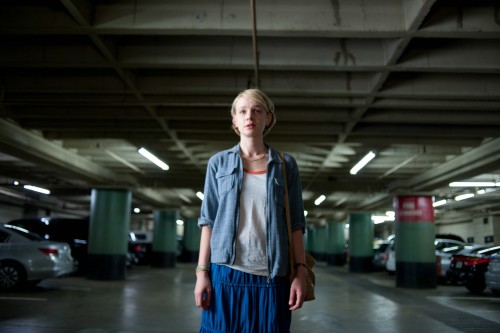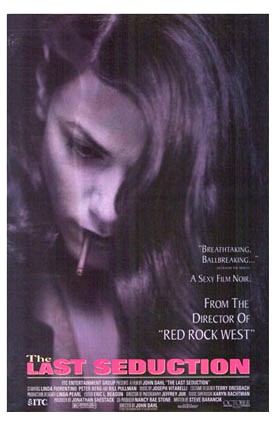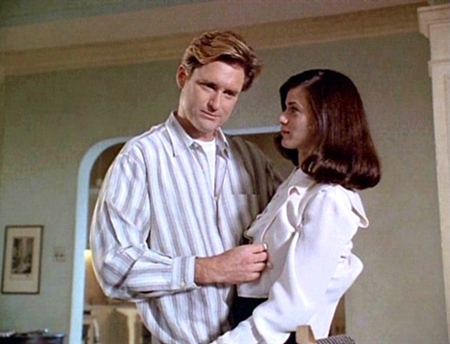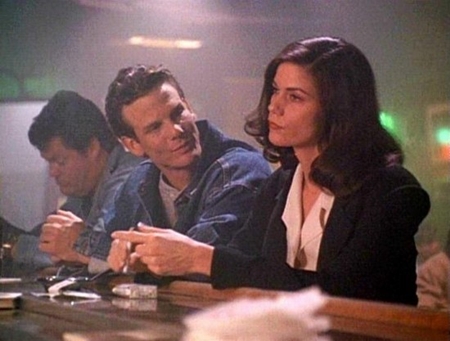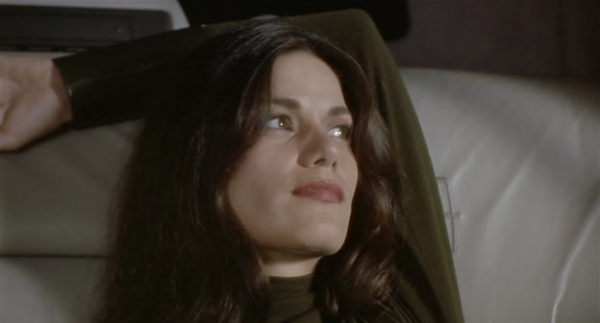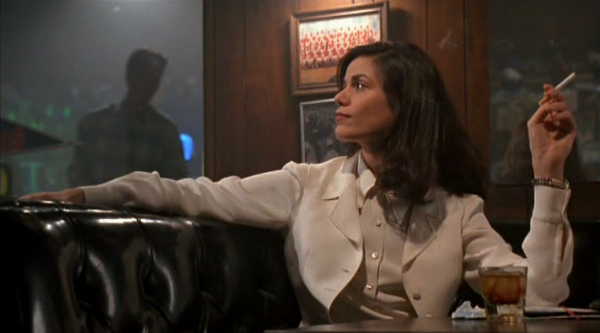
This is a guest post by Giselle Defares.
The alluring femme fatale always played an important part in our Western cinematic history. The archetype of the errant woman was present ever since Theda Bara graced the screen in the silent film era of the 1920s. Nevertheless, it was film noir that polished the archetype. The highly stylized and suspenseful film genre formed the basis of the Hollywood creation of the femme fatales in the 1940s and 1950s. The genre broke the conventional stereotypes of one-dimensional, insecure and dependent women. Instead women were vivacious, captivating, seductive female characters who owned the screen while sashaying through their own created webs of deceit and betrayal (although some would say they were manipulative and cold-blooded with an sexual self-serving attitude). The archetype changed over time, which is intertwined with the modernization of the film industry. The femme fatale is in its essence a tool to help us understand the limits of social and cultural roles surrounding women. The neo-noir Drive (2011) is an homage to the old-fashioned art form of escapism.
It took more than six years before Drive was shot. The film adaptation of the novel by James Sallis initially appeared to be heading in the same direction as the popcorn flick The Fast and the Furious. Hugh Jackman and director Neil Marshall (Doomsday, Centurion) were first attached to the project. When Gosling took the place of Jackman, he specifically asked for director Nicolas Winding Refn. The quirky Danish director debuted with the raw thriller Pusher, and followed it with Bronson with Tom Hardy as lead about Britain’s most violent prisoner and he also directed Valhalla Rising, a Viking movie filled with brutal fights, but ends in silent contemplation. Winding Refn is an unpredictable director with his own peculiar visual style. The film has similarities with an ’80s classic. In 1978, Walter Hill created The Driver with Ryan O’Neal as nameless hero. Similar to the main character in Drive, we will never know his name. They do share a profession: if somewhere in the city a robbery is committed, they are the cold-blooded drivers of the getaway car. In 2011, Winding Refn won the award for Best Director at the Cannes Film Festival for Drive.
Drive centers around Ryan Gosling as a handsome loner, silent, gentle and a master on the road. He works in the garage of Shannon (Bryan Cranston), who gives him criminal jobs and occasionally work as a stunt driver on Hollywood film sets. Shannon wants his most talented driver to start a new career in the professional racing circuit and concludes a deal with two mafia business partners, Bernie Rose (Albert Brooks) and Nino (Ron Perlman). The young driver, meanwhile, gets acquainted with his neighbor, Irene (Carey Mulligan) and her son, Benicio. Irene immediately falls for his charm. Only the scorpion on the back of his jacket recalls the dark aspects of his existence. And that one, beautiful, ominous shot where we see him on a film set as a stand-in with a latex mask over his head.

Is Irene the modern femme fatale in Drive? One of the interesting aspects of the character is that she’s played by Mulligan. The original character in the script was an Hispanic woman named Irina. In a conversation with Interview Magazine, Winding Refn bluntly states that he gave Carey Mulligan the part because she “seemed pure,” like someone he wanted to protect. Apparently he couldn’t imagine a Latina actress in the part. He picked Mulligan specifically because she fits the mold of the damsel in distress that in Hollywood is synonymous with white.
Irene is described as a beautiful and seductive woman but she’s not a direct danger to Driver. We can see that there’s tension between Driver and Irene, but Irene is more insecure than hyperaware of her sexuality. Irene is the object of sexual desire of Driver and because he becomes intrigued by her, he will do anything to help her. The classic femme fatale is often seen as sexually uninhibited, independent, and ambitious. Irene comes across as sexually inhibited in her relationship with Driver because she knows that her husband will soon return home from prison. However, from the moment that she meets Driver, she relies on him for help.

Irene’s husband asks Driver for help when he comes back from prison because of an outstanding debt. Driver wants to protect Irene and as a result he becomes entangled in a criminal job to raise the money, and that’s eventually his downfall. Irene never explicitly asked Driver for help. Instead of the so-called “evil seductress who tempts the man and brings about his destruction,” Irene seems more a passive, innocent woman who indirectly without intent, will perish the man.
Irene seems to be a combination of the femme fatale and the femme attrapée. The femme attrapée is, according to Janey Place in “Women in Film Noir,” a woman who “offers the possibility of integration for the alienated, lost man into the stable world of secure values, roles and identities. She gives love, understanding (or at least forgiveness), asks very little in return (just that he come back to her) and is generally visually passive and static.”
Driver is here the alienated, lost man and Irene gives him love and understanding. Both characters seem lonely and find solace in their relationship. Irene comes across as a passive, brave, and sweet woman but functions in the story as a femme fatale. Her innocence ensures that Driver makes the wrong choices. In film noir, the male protagonist would make the wrong choices because the femme fatale has instigated him with her sexuality, but Drive allows Driver to make these choices to save Irene. Drive has an open ending so the future of Driver remains unclear.
The femme fatale in the modern neo-noir films from the 1960s, 1970s and onward transformed into a more passive role, rather than active and manipulative. We see elements of Irene herein. Irene doesn’t fit the classic description of the femme fatale. She’s no Gloria Swanson, Marlene Dietrich, Barbara Stanwyck or even a Sharon Stone. It’s not the loss of control by a seductive woman that resulted in the downfall of Driver but instead taking the rains, coercion and protective instinct. The archetype will pop up in films in years to come since it always captures our imagination.
The tight script was penned down by the Academy Award-nominated screenwriter Hossein Amini. Amini was hesitant at first because of the non-linear structure of the novel but he definitely made the transition from page to screen work. Cinematographer Newton Thomas Sigel neatly used wide-angle lenses instead of handheld camerawork to capture Winding Refn’s visual style. The film was shot digitally and Winding Refn was able to capture evocative, intense images of Los Angeles. The film has a 1980s atmosphere which comes true via the cars, music, clothes, but especially with the architecture in downtown Los Angeles. It all reflects the art house approach of Winding Refn.
Wending Refn follows the beat of his own drum. As a result, Drive isn’t your run of the mill action flick. The emphasis in Drive lies first and foremost on the characters, accompanied by the speed, and the wonderful soundtrack. Winding Refn managed to create an enigmatic film that engages, shocks, and surprises–old fashioned escapism and inescapable at once.
See also at Bitch Flicks: Drive and the Need to Identify the Virgin or Whore in the Passenger Seat, by Leigh Kolb
[youtube_sc url=”https://www.youtube.com/watch?v=Pe6eOqheva8″]
Giselle Defares comments on film, fashion (law) and American pop culture. See her blog here.
